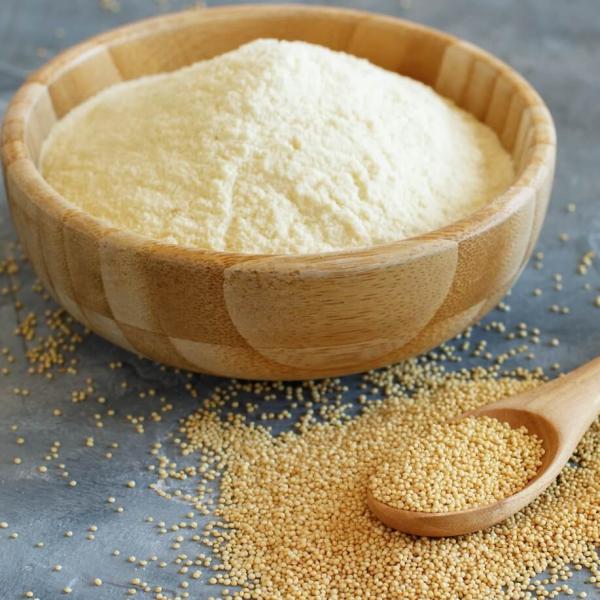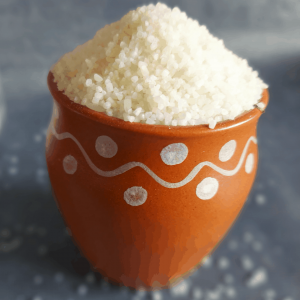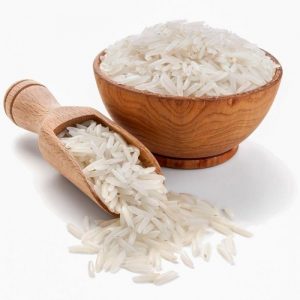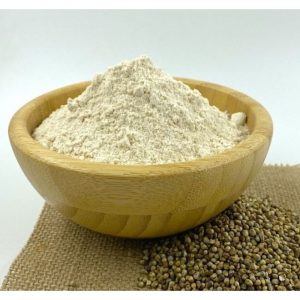Description
Amaranth flour is a gluten-free flour made from grinding the seeds of the amaranth plant (Amaranthus spp.). Amaranth is a highly nutritious pseudo-cereal that has been cultivated for thousands of years in Central and South America, as well as parts of Africa and Asia. Amaranth flour is valued for its high protein content, rich nutrient profile, and versatility in cooking and baking.
Here are some key characteristics and uses of amaranth flour:
1. Nutritional Profile: Amaranth flour is exceptionally nutritious, containing high levels of protein, dietary fiber, vitamins, and minerals. It is particularly rich in calcium, iron, magnesium, phosphorus, and manganese. Amaranth flour is also a good source of essential amino acids, including lysine, which is often lacking in other grains.
2. Gluten-Free: Amaranth flour is naturally gluten-free, making it an excellent alternative for individuals with gluten intolerance or celiac disease. It can be used as a substitute for wheat flour in recipes to create gluten-free baked goods, such as bread, muffins, pancakes, and cookies.
3. Cooking and Baking: Amaranth flour has a slightly nutty flavor and a fine texture, making it suitable for a variety of culinary applications. It can be used in both sweet and savory recipes, including bread, cakes, cookies, crackers, pasta, and tortillas. Amaranth flour can also be used as a thickening agent in soups, stews, sauces, and gravies.
4. Combined with Other Flours: While amaranth flour can be used alone in recipes, it is often combined with other gluten-free flours, such as rice flour, tapioca flour, or sorghum flour, to improve texture and flavor. Experimenting with different flour combinations can help achieve the desired results in gluten-free baking.
5. Health Benefits: Amaranth flour offers several health benefits due to its nutrient-rich composition. It is high in protein, which helps support muscle growth and repair, as well as fiber, which promotes digestive health and helps regulate blood sugar levels. Amaranth flour also contains antioxidants, which help protect cells from damage caused by free radicals.
6. Availability: Amaranth flour is readily available in most health food stores, specialty grocery stores, and online retailers. It is typically sold in bags or bulk bins and should be stored in an airtight container in a cool, dry place to maintain its freshness and quality.
Overall, amaranth flour is a versatile and nutritious ingredient that adds flavor, texture, and health benefits to a wide range of dishes. Whether used in gluten-free baking or as a thickening agent in savory recipes, amaranth flour is a valuable addition to any kitchen pantry.






Esther –
I’ve been experimenting with different flours in my quest to eat healthier, and amaranth flour has become one of my favorites. Not only does it make my baked goods taste amazing, but it’s also incredibly nutritious. I appreciate that it’s a complete protein and contains essential vitamins and minerals.
Mary –
As someone with a gluten intolerance, finding alternatives to traditional wheat flour has been a game-changer for me. Amaranth flour has quickly become a staple in my pantry. It works beautifully in all of my baking recipes, from pancakes to cookies. The flavor is fantastic, and I love knowing that I’m getting the nutritional benefits of this ancient grain with every bite.
Abubakar –
I recently started incorporating amaranth flour into my gluten-free baking recipes, and I’m thrilled with the results! The texture is fantastic, and it adds a lovely nutty flavor to my bread and muffins. Plus, knowing that it’s packed with protein and nutrients makes me feel great about what I’m eating.